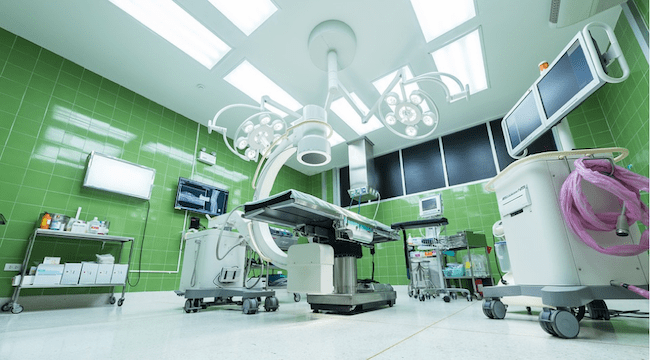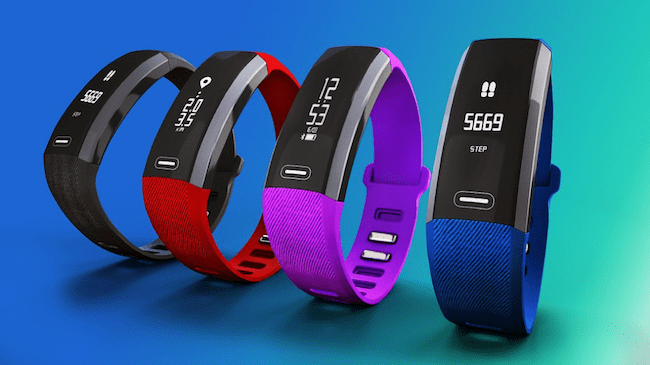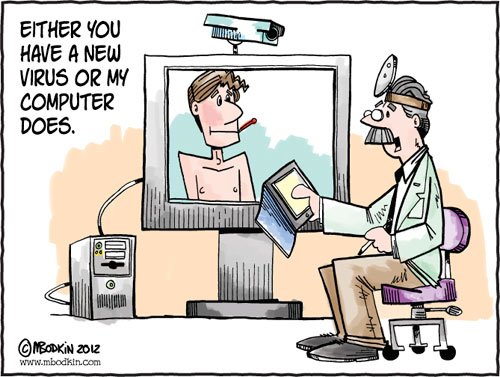Technological advances impact just about every aspect of our lives. The healthcare industry is no exception to new developments, and technology is playing a huge role in changing how healthcare is delivered, how diseases are diagnosed, how treatment is offered and a breathtaking range of other benefits for both physicians and patients.

Picture Courtesy: Pixabay
The scope of new and emerging medical technologies is breathtaking. From high-tech sensors that monitor a patient’s cardiac condition to robots that are paving the way for more efficient medical facility operations, real-time access to patient data to new futuristic medical equipment, technology is indeed changing medical care.
Here are some of the medical technologies playing a key role in providing better healthcare for patients.
Electronic Health Records
Electronic health records (EHRs) have come a long way from simply maintaining patient records to helping improve patient outcomes and save health care dollars. Over the years, more and more physicians and medical facilities have adopted EHR technology for a number of reasons.
- Increased Efficiency – EHR technology has ensured that patient health data is easily available when and where it is needed. Physicians can monitor patient information in real-time and also facilitate simple prescription ordering and filling for patients.
- Improved Healthcare – Considering that electronic health records maintain up-to-date patient information about treatments and prescriptions offered by other providers, physicians are able to offer better healthcare solutions, improving patient care.
Recently, the topic that drew a lot of public attention in the US, is about the Obamacare Penalty changes since December. Apparently, people will still have to pay the Obamacare Penalty for not having health insurance in 2018.
- Reduced Costs – With less paperwork to deal with, improved patient care safety, reduced duplication of testing and overall improve patient care, medical facilities, physicians and even patients enjoy reduced costs.
Physicians who partner with EHR industry leaders to maintain their patients’ electronic records are able to create a more efficient and reliable patient data platform that allows easy access to patient healthcare information at any time.
Prototyping
One of the biggest challenges for most healthcare providers today is sourcing quality supplies for critical device components at an affordable cost. While the manufacturing technology used in producing medical device components and equipment has changed, a lot of challenges are still faced when it comes to tool design and engineering. According to the owner of Weiss-Aug.com “…prototype fabrication has a focus on design for manufacturability and manufacturing process conversion.”
However, prototyping technology is widely being used as the go-to manufacturing option for medical device components. Improved prototyping technology and design support have ensured that physicians and medical facilities enjoy high-quality components that come with superior product form and function, ready for final assembly and production.
Telemedicine
Telemedicine technology allows a physician to see a patient remotely, using a secure, web-based platform. This technology is increasingly becoming valuable, especially in locations where access to top specialists is limited or where there is no adequate number of primary care physicians. The technology now allows doctors to evaluate patients in medical emergencies and even offer treatment solutions without them being physically present.
While telemedicine is not practical or appropriate for every medical situation, it is definitely going to be employed by physicians and even medical schools more widely across the globe in the coming years. According to Health Tech Zone, portal technology is one of the new technologies changing healthcare for the better.
Healthcare Wearables, Trackers and Sensors
The future of medicine and healthcare is focusing more on patient involvement and participation. Healthcare wearables, trackers and sensors are leading the way in helping individuals and patients take care and monitor their own health using technology. There are a number of smart medical and healthcare devices being used to achieve better health care.

Picture Courtesy: Pixabay
From managing weight to monitoring your cardiac health, checking fitness levels to monitoring more complex health conditions and even fitness tracking, there is a wide range of wearables, health trackers and medical sensors offering better and easier healthcare monitoring solutions for both patients and physicians.
Robotics
Robotic technology is also playing a huge role in some aspects of health care. For instance, tremendous progress has been made in producing surgical robots that respond to the movements of a surgeon’s hands, allowing more complex surgical procedures to be done under the accurate judgment of a surgical expert.
A number of physicians are undergoing surgical robotics training to use the technology in their practice. Robots are also being used in healthcare facilities to deliver drugs, meals and linen, cart away medical waste and trash and carry out more complex roles like helping paralyzed people walk or even act as a social partner such as the Jibo, Buddy and Pepper robots.
Nanotechnology
Nanotechnology is one of the fastest growing areas of medical technology. While the study and application of nanoscience are still in progress, there are endless ways in which nanotechnology can be applied by physicians to better improve healthcare. For instance, nanorobots could be deployed inside the human body to repair damaged cells at the molecular level. Nanodevices could also be used to measure everything from early signs of cancer to cholesterol levels.
3-D Printing
3-D printing technology is already in widespread use all over the world. The quick adoption of this technology across almost every industry demonstrates the potential it holds for the future of medicine. For instance, 3D printing is already being used to print tissues with blood vessels, ears, synthetic skin and even bones for research purposes in various labs around the world.
Medical researchers are harnessing the potential of 3D printing to vastly improve patient care. For instance, a Los Angeles Medical Center is already perfecting the use of 3D printing technology to produce exact, multidimensional models of specific trouble spots inside a patient, according to Hnhmag.com article on medical technologies.These 3D models can be used by surgeons to simulate a variety of possible procedures before the actual operation is done.
The Future of Medical Technology
There is no doubt that technology advances in the medical sector will greatly enhance how physicians provide better care to patients. However, the importance of patient-doctor relationship can never be replaced by technology. The future of medical technology remains bright, and a lot is expected in the coming years.
